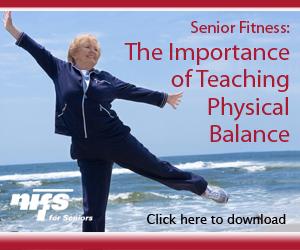The number-one challenge that the aging population faces is balance because the number-one concern is falling. The question has always been, “What causes these falls and how can we continue to prevent them”? The answer from a recent study is outstanding (no pun intended!).
Study Shows What Causes Senior Falls
An observational study determined how and why falls occur in the aging population by actually videotaping falls in two long-term-care facilities between 2007 and 2010. These video cameras were placed in the common areas such as the dining rooms, hallways, and lounges. When a fall occurred it was reviewed with a focus on the actual cause of imbalance and the activity at the time of falling. The study captured 227 falls from 130 individuals. The result of the study concluded that the number-one cause of falls (41 percent) was incorrect weight shifting: basically, how one moves or transfers from one position to another.
The study identified that the majority of falls occurred during standing and transferring, how we go from the position of standing still to starting to move. Staying balanced doesn’t involve only maintaining it when we are in motion, but the study has proven that how we begin that motion can be much more crucial to staying in balance.
Weight-Shifting Exercises for Senior Fitness and Balance
Therefore, in order to improve balance and prevent falls, it is crucial that a balance program incorporate weight-shifting exercises to help teach seniors about their center of gravity. Weight-shifting exercise can also improve coordination, strengthen the muscles in the lower extremities, and teach slower and more precise movements. Older adults should speak with a qualified fitness professional who understands the functional needs of the population, including balance-training recommendations. Fitness professionals can administer balance-training and weight-shifting exercises through one-on-one personal training sessions, group exercise classes, or simple recommendations of exercises for one to include in his or her normal fitness routine.
Here are some examples of weight-shifting exercises for active older adults:
- Side Sways: While seated in a chair or standing, place the feet slightly wider than hip width apart. Leading with the upper body, lean the body gently to the right while keeping both feet in contact with the floor. Repeat in the other direction. Repeat 10 to 15 times.
- Forward Steps: Standing with the feet together near a chair back or counter top to hold onto, take an exaggerated step forward with the right foot. Then take the necessary amount of steps to recover to a normal standing position. Repeat 8 to 10 times and then perform on the left leg.
If you are interested in reading about the study and the specific findings, follow this link.
Download our QuickRead for more information on the importance of teaching physical balance in your active aging community!

